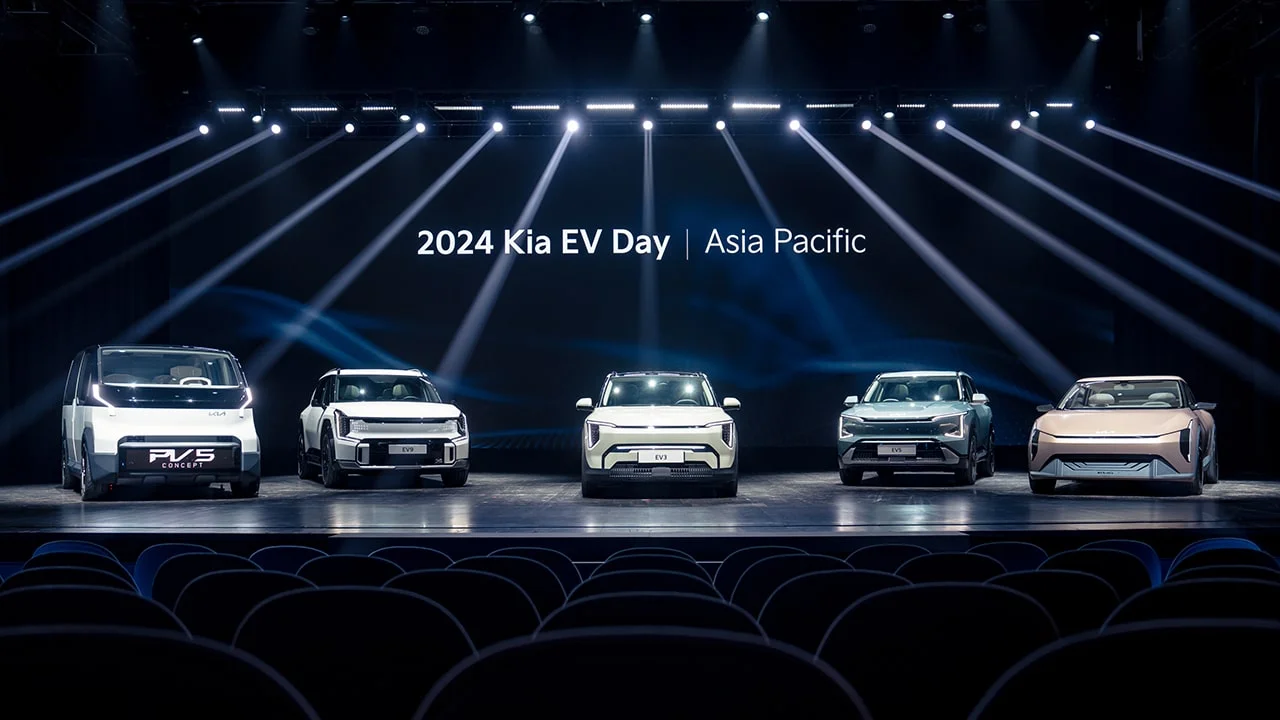Kia, much braver than pushing the envelope for SUVs and sedans, is shifting to Purpose-Based Vehicles (PBVs) at a time when the electric vehicle (EV) revolution gathers pace. Autonomous and shared mobility has grown exponentially, and with it, comes the demand for purpose-specific vehicles-just in time for PBVs in heavy investment by Kia, much to commercial transport, delivery service, and leisure travel categories.
1. Kia Insights-PBV Towards Its Bright Future of EVs 🚗⚡
Kia now moves towards PBV, which dovetails its destiny toward a much bigger vision and future plan by the Hyundai Motor Group in creating sustainable and intelligent mobility solutions. PBVs target certain industries and services, thus maximization of efficiency, adaptability, and even sustainability.
Important Points in Kia’s PBV Strategy:
✅ Specific PBV Production Facility: Kia has broken ground on a modern PBV factory in Hwaseong, South Korea, expecting to begin mass manufacturing by 2025. As part of the global hub for electric commercial vehicles, this facility will end up being.
✅ Flexible and Modular Design: PBVs will be tailored for logistics, ride-hailing, healthcare, and urban transport within flexible boundaries for businesses.
✅ Making it Sustainable: Kia’s PBVs will place significance on the use of eco-materials and energy-efficient designs in the long run.
2. Kia PBV-PV5: The First in the Family 🚐💡
Kia puts this near into close proximity, the next-generation electric van rapidly bringing up to speed for urban mobility and commercial usage-the PV5. At the very core of it is a different E-GMP.S platform, which is a modified version of Hyundai’s Electric Global Modular Platform (E-GMP).
Different Configurations of PV5:
🚛 Cargo Version: Ideal for last-mile deliveries and logistics companies.
🚖 Passenger Version: Dedicated to ride-hailing, taxi services, and urban mobility.
♿ Wheelchair Accessible Version: More inclusive for people in wheelchair transport.
🏕 Light Camper Version: A recreational model for road trips and adventure travel.
🔹 Launch Timeline: The Kia PV5 will go to the South Korean market and Europe by late 2025 as the mass production kicks off by July 2025.
🔹 Why It Will Matter: While the growth in e-commerce and ride-hailing services has put a big demand on electric commercial vehicles, the PV5 will make or break sustained progress in making transportation more sustainable-arguably one of Kia’s most important contributions.
3. Still Growing Kia’s Electric Vehicle Family ⚡🌍
But PBVs are not the exclusive arrangements. In diversifying the EVs for the e-marked sections, Kia introduced models such as the EV4 sedan or hatchback, which complete the accessible, value-for-money long-distance drive mainstream offer.
Kia EV4: An Affordable Long-distance Sedan
✅ Range of 630 km (391 miles), 81.4 kWh battery.
✅ Range of 430 km (267 miles), 58.3 kWh battery.
✅ Expected Launch in the Korea-March 2025, and then North America and Europe.
Future EV Expansion
🔹 EV3 and EV2: A model that targets entry-level buyers with affordable pricing.
🔹 Electric SUV Line-Up: Kia intends to broaden its electric SUV line as a fine balance between urban mobility and off-road capability.
4. Future Mobility-Innovators: Kia’s PBVs and EVs 🚀🔋
The company’s conversion from traditional SUVs and sedans to PBVs and an extended EV lineup is about responding strategically to changing mobility trends.
Industry Transformations Targeted by Kia:
🛒 With the E-Commerce Boom: Same-day delivery services are high in demand for electric cargo vehicles which are efficient.
🚕 Smart City Mobility: These PBVs will assist in autonomous ride-hailing services, public transport, and also medical transport.
♻️ Green Transportation: Kia remains committed to environmentally friendly EV production, which complies with general emission reduction objectives.
5. Issues and the Road ahead for Kia’s EV Expansion 🏁🌎
However, Kia is progressing greatly in front of the challenges that the PBV market brings:
🔻 Infrastructure Limitations: Need for improved EV charging networks and battery supply chains.
🔻 Competition from Global Automakers: Some players like Tesla, Rivian, and Ford are also entering the market for electric commercial vehicles.
🔻 Consumer Acceptance: Persuading corporates to replace the gas-powered fleets with electric PBVs.
How Is Kia Overcoming This?
✔ Charging Infrastructure investments in important global markets.
✔ Partnering with Logistics & Ride-Hailing Companies for building adoption.
✔ Offering Incentives & Financing Options to facilitate the transition to PBVs.
Conclusion: Kia’s Vision for the Future of Electric Mobility 🌎⚡
The transition of Kia from only SUVs and sedans to PBVs and next-gen EVs signals a turning point in the automotive industry. Kia is not just keeping pace with industry trends; it’s the one shaping the future of mobility with its focus on customized, sustainable, and modular EVs.With innovative electric vans such as the PV5, value-for-money EVs such as the EV4, and a dedicated PBV production hub, Kia is strategically positioned to play a major role in the next generation EV market. The PBV-led approach from Kia could alter the way businesses and consumers engage with electric vehicles in the next years, as governments continue to push greener transportation policies.




